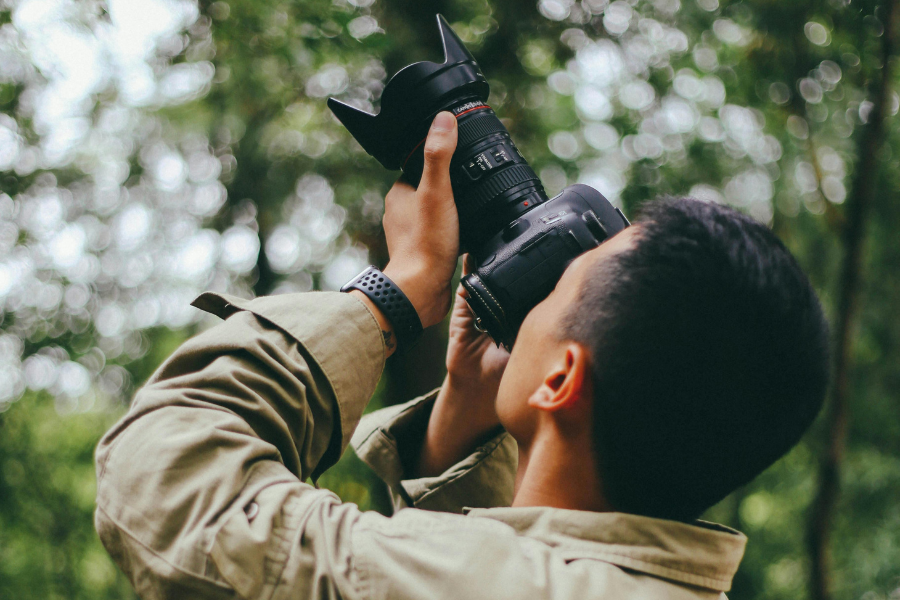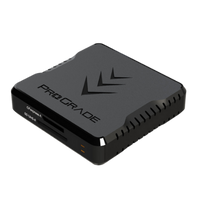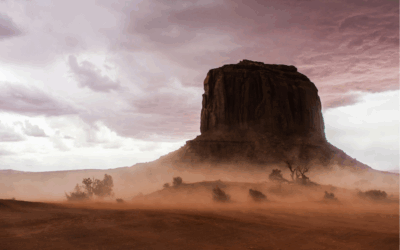The leap from using automated camera settings to mastering manual mode can seem daunting for professional videographers and photographers alike. Yet, this shift is often where the true artistry and expertise in image-making begin.
A common misconception is that manual mode is overly complex and inaccessible. Many believe that navigating through settings requires expert knowledge and that the risk of making mistakes outweighs the benefits of shooting in manual mode. This narrative does little justice to the empowering experience and creative freedom that mastering manual mode offers. This article aims to demystify shooting in manual and showcase how it can significantly enhance the quality and style of your work.
Understanding Manual Mode
Manual mode is the setting on a camera that hands full control of its functions over to the photographer, bypassing the camera’s internal logic that dictates exposure settings in automatic modes. This means the photographer has complete authority over shutter speed, aperture, and ISO, giving them full control over how light is captured. By adjusting these settings manually, photographers can create images with unique exposures and artistic effects.
Key Components of Manual Mode
Mastering manual mode hinges on understanding and effectively manipulating three critical settings: ISO, shutter speed, and aperture. Each component plays a pivotal role in the creation of the final image or video, impacting its brightness, motion blur, and depth of field.
- ISO determines the camera sensor’s sensitivity to light. A lower ISO setting is used in brightly lit situations to avoid overexposure, resulting in clearer, grain-free images. Conversely, higher ISO settings enable shooting in low-light conditions, though this may introduce some grain or “noise” into the image.
- Shutter Speed controls the duration the camera’s shutter is open to expose light to the sensor. Fast shutter speeds freeze action, capturing sharp images of fast-moving subjects. Slow shutter speeds allow more light in, which can create motion blur, conveying movement in a still image.
- Aperture refers to the opening in the lens through which light enters the camera. A wide aperture (low f-stop number) lets in more light and creates a shallow depth of field, focusing sharply on the subject while blurring the background. A narrow aperture (high f-stop number) allows less light but increases the depth of field, keeping more of the scene in focus.
Together, these elements allow photographers and videographers to experiment with light and composition, translating their artistic vision into captivating images and videos.
Benefits of Shooting in Manual Mode
Now, let’s explore the many benefits of shooting in manual mode for photographers and videographers, enhancing their ability to capture images and videos with precision and creativity.
Creative Control and Precision
Shooting in manual mode provides an unparalleled level of creative control and precision over the aesthetic and technical aspects of an image or video. This control is pivotal in crafting visual stories that resonate with viewers on a deeper level. In manual mode, photographers and videographers can adjust the ISO, shutter speed, and aperture to match their creative vision perfectly.
For instance, by manipulating the aperture settings to achieve a shallow depth of field, a photographer can expertly highlight the subject while artfully blurring the background, directing the viewer’s focus precisely where intended. Similarly, adjusting the shutter speed allows videographers to either capture fast-moving action without blur or deliberately introduce motion blur to convey speed and dynamism in a scene. This meticulous adjustment of camera settings empowers creators to not only represent the world as seen through their eyes but also to infuse their work with emotion and narrative, achieving a perfect harmony between subject matter and artistic intent.
Adaptability in Diverse Lighting Conditions
One of the most significant advantages of shooting in manual mode is the ability to swiftly adapt to diverse lighting scenarios, ensuring that your images always retain the highest quality possible. In automatic or semi-automatic shooting modes, cameras often struggle with extreme lighting conditions, resulting in overexposed highlights or underexposed shadows that can diminish the visual impact of a photograph or video. However, with manual control, photographers and videographers can adjust the ISO, aperture, and shutter speed in real time, compensating for the intricacies of the lighting situation at hand. Whether capturing the subtle nuances of a sunset or balancing the harsh contrasts of midday light, manual settings allow for precise adjustments that preserve detail and prevent loss of information in the image.
Furthermore, the use of manual mode in challenging lighting conditions opens the door to creative experimentation. For instance, in low light scenarios, a photographer can choose to use a higher ISO to capture the scene without a flash, maintaining the ambiance and mood of the setting. Alternatively, playing with long shutter speeds can turn a simple night scene into a canvas of light trails, transforming a conventional image into a vibrant piece of art. By mastering the ability to fine-tune settings in manual mode, photographers and videographers not only overcome the limitations posed by varying light conditions but also harness these challenges as opportunities to craft visually stunning and emotionally resonant works that stand out in the saturated world of visual media.
Enhanced Learning and Skill Development
The profound educational value of using manual mode cannot be overstated; it serves as a practical classroom for deepening the understanding of photographic principles and significantly improving one’s skill set. When photographers and videographers dictate every variable, from ISO to shutter speed and aperture, they’re encouraged to think critically about the nature of light and its effects on their final product. This hands-on learning experience cultivates a nuanced appreciation of how these elements interact to produce a certain image quality or atmosphere, fostering a more intimate relationship with the craft.
Achieving the Desired Visual Outcome
Achieving specific visual styles or effects often requires the nuanced control offered by manual mode, as automatic settings may not accurately interpret the photographer’s vision. For instance, long exposure photography, a technique that involves using slow shutter speeds to blur motion, can create stunning effects such as silky smooth waterfalls or highways marked by streams of light from moving cars. This effect is difficult, if not impossible, to achieve with automatic settings, as the camera may prioritize a faster shutter speed to avoid motion blur, misunderstanding the creative intent.
Another example is the bokeh effect, where a subject is in sharp focus against a beautifully blurred background. This effect is achieved by using a wide aperture to reduce the depth of field. While some cameras offer a “portrait” mode that attempts to replicate this effect, the results often lack the subtleness and control that manual settings provide. By selecting the precise aperture, a photographer can control the extent of the blur and the focus on the subject, tailoring the shot to their artistic vision.
Similarly, in low-light photography, manual mode allows for the balance of ISO, shutter speed, and aperture to capture detailed night scenes without excessive noise or blur. Automatic settings may increase the ISO too high introducing unwanted noise, or choose inappropriate shutter speeds that either overexpose the scene or fail to capture its dynamics accurately.
These examples underscore the indispensable role of manual mode in realizing creative visions and specific visual styles, providing photographers and videographers with the tools to push the boundaries of their art beyond the limitations of automatic settings.
Case Studies and Professional Insights
In practice, proficiency in manual mode opens doors to an eclectic portfolio. Consider a wedding photographer manipulating aperture to isolate subjects from busy backgrounds, or a wildlife videographer adjusting shutter speed to crisp perfection in capturing the flitter of wings— these are stories best told through the lens of manual prowess.

Capturing this moment required a meticulous manual adjustment of settings, utilizing a wide aperture to achieve a shallow depth of field focusing on the couple and the glittering raindrops, while the rest of the world fades into a soft, romantic blur.

Capturing the pristine majesty of a snow owl in flight, wings outstretched against a seamless snowy backdrop—frozen in perfect clarity and detail—would necessitate a swift shutter speed paired with precise focus, a feat nearly impossible to achieve with the constraints of automatic mode.

The serenity of dawn at a pier, where the gentle caress of early morning light meets the tranquil waters, creates unparalleled calmness. This vision can be brought to life through the art of long exposure in manual mode.
Overcoming the Challenges of Manual Shooting
While shooting in manual mode presents an array of creative possibilities, it can also pose challenges, especially for those new to the craft. Here are several tips to help overcome these hurdles and enhance your manual shooting technique:
- Previsualize and Plan: Before you start shooting, take a moment to previsualize the shot you want to achieve. Consider the composition, lighting, and any potential challenges you might face. Planning ahead can significantly reduce the stress of adjusting settings on the fly.
- Familiarize Yourself with Your Equipment: Spend quality time getting to know your camera and lens. The more familiar you are with the settings and how they affect your images, the quicker you’ll be able to adapt to changing environments.
- Use the Histogram: The histogram is a powerful tool for assessing exposure levels in real time. Learn to read and adjust your settings based on the histogram to avoid overexposed highlights or underexposed shadows.
- Master the Exposure Triangle: Understanding how ISO, shutter speed, and aperture work together is critical for manual shooting. This knowledge allows you to quickly adjust settings while maintaining the desired exposure and effect.
- Start with Shutter Priority or Aperture Priority Mode: If you’re new to manual mode, using shutter priority (Tv or S) or aperture priority (Av or A) mode can be a helpful intermediate step. These modes allow you to control one aspect while the camera adjusts the others, helping you learn the impacts of changing settings.
- Practice, Practice, Practice: Like any skill, proficiency in manual mode comes with practice. Challenge yourself to shoot in various conditions to become more comfortable and quicker at making the necessary adjustments.
- Adjust One Setting at a Time: In fast-changing environments, try to adjust only one setting at a time to achieve the desired result. This can help simplify the process and make it easier to adapt quickly.
- Review and Adjust: After taking a shot, review it closely on your camera’s screen, paying attention to exposure, focus, and composition. Don’t hesitate to make necessary adjustments and reshoot if needed.
Conclusion
In conclusion, the transition from automatic to manual mode marks a significant milestone in the journey of every photographer and videographer. It is a step that signifies not just a desire to take control over the technical aspects of image-making, but also a commitment to a deeper, more meaningful engagement with the art form. The nuanced control manual mode offers is not just about achieving the desired visual outcome; it’s about expanding the creative possibilities, pushing boundaries, and cultivating a unique artistic voice. By choosing manual mode, you are choosing to become a storyteller, one who is adept at using light, shadow, and focus to weave narratives that captivate and resonate.
Encouraging experimentation with manual mode is not just about advocating for a set of technical skills; it’s about inspiring you to become more versatile and adept in your craft, whether photography or videography. The challenges and frustrations that come with manual shooting are, indeed, part of the learning curve, but they pave the way to mastery and fulfillment in the art. Every adjustment, every tweak, and every decision you make in manual mode brings you closer to realizing your creative vision. Take this as an invitation to explore, experiment, and ultimately excel. The path to becoming an empowered artist, capable of capturing the world through your unique lens, begins with the courage to turn the dial to manual.





